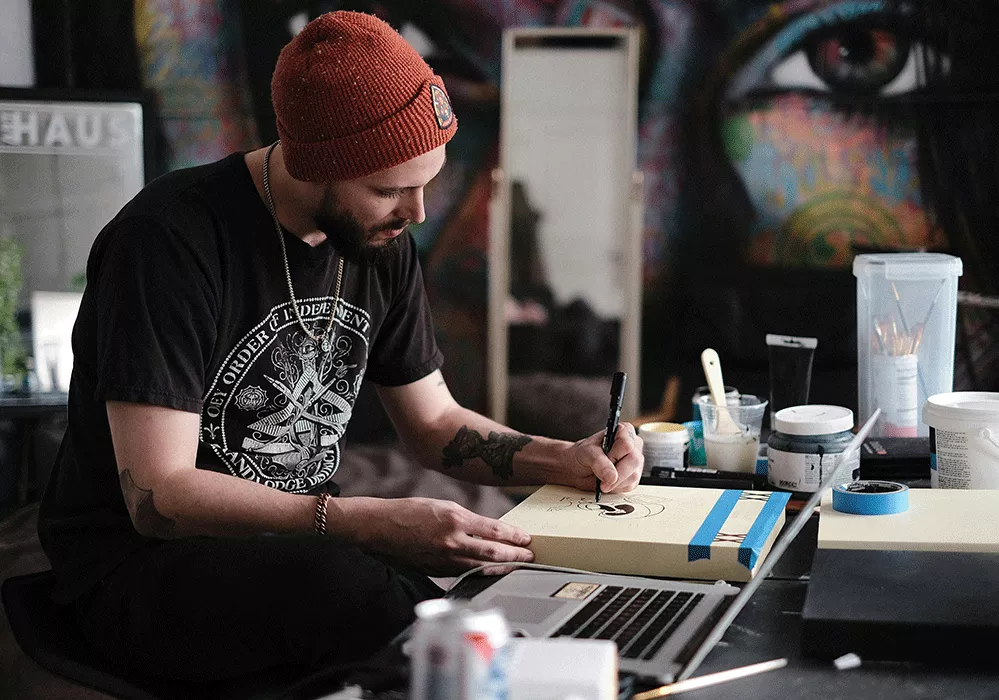The future we dream: AI and design

The emergence of generative AI (GenAI) design software like Firefly, Dall-E, and a host of other applications has us barreling headlong into an era of perceived design democratization. Once largely thought to be the province of creatives with art degrees, anyone with access to the internet can now curate extraordinary, high-fidelity outputs, from hyperrealistic images and award-winning films to penned articles in the literary style of Hunter S. Thompson.
This software is finding a rabid user base with business executives who are long on ideas but perhaps short on illustration skills, and can now play Walt Disney in boardrooms. In all corners of industry, AI is sourcing a stream of keywords into creative expressions and articulating compelling future visions that colleagues can believe in.
But believability isn’t the measure of creativity. In other words, being able to visualize an idea does not in itself mean the idea is unique or progressive. Or even valuable. Albert Einstein once said, “Creativity is seeing what everyone else has seen, and thinking what no one else has thought.” Rather than combining existing ideas into something interesting but familiar, the crafting of something truly different is foundational to breakthroughs.
And this is where the tension between AI and design will spur change. As stated above, some say that AI precipitates the eventual and inevitable commoditization of design. That if algorithms can more cheaply and quickly articulate ideas, why would we keep expensive artists and writers? Why invest in long timelines for concepting, iterating, and refining if we can jump to the end and still conjure a serviceable output? The answer is simple: AI may be an extraordinary tool for aggregation and extrapolation, but it is not creative.
The importance of avant-garde creativity through design in driving step-change innovation abounds in human history: from designing architectures for delivering electricity to designing semiconductors, from designing rotary devices to the interaction patterns of the iPhone, or from designing the first steam engine to the sustainable design of reusable space rockets. In each of these examples, creativity through design resulted in enormous leaps forward, manifested through art and science. In the case of AI, the science may be obvious (if not complex).
But what of the art? Where does AI fit?
AI and design
Much is now known and plenty of words have been written about early possibilities with GenAI as it pertains to improving experiences: chatbots that sound like people but with faster, more precise answers; planners that consolidate large quantities of data to chart steps and record mundane tasks. But AI is still a predictive model, not a sentient being. It does not dream of new ideas without being queried or marvel spontaneously out of delight.
Take, for example, modern service blueprint design. For many strategy endeavors, this is where we start: a human-centered approach to understanding how to make things better. Mapping every moment of a process, front and back of house, including the sentiment of the people involved, is how we uncover and prioritize opportunities for improvement. While AI might be able to quickly record notes and synthesize interviews, it will not marvel at and pull insights from sticky notes on the desk of an employee indicating work-arounds. It will not recognize inflections in the voice of an interviewee, indicating we could learn more if we reposition a question.
AI might save us time, but it is still another tool. As is true with the emergence of the internet, the more AI can do in the future, the more we will be able to do, pushing AI further rather than being replaced by it. It is our human traits—curiosity, passion, and perspective—that provide the roadmap for AI and elevate more thoughtful experiences.
The way forward
Humans will lead. AI will help us go further. Chatbots are quickly becoming old news, so what’s next? Where will AI go from here once we cross the chasm of uncertainty and through the trough of disillusionment that is certainly coming after the hype cycle has faded?
AI might never have invented Spanx, but it could have helped Sara Blakely secure her patent more quickly. It would not have written the solo in “Stairway to Heaven,” but it could have helped Jimmy Page transcribe the music. And it certainly would not have painted the Sistine Chapel, but perhaps it would have recommended a better way to preserve the plaster.
Creativity from talented designers, strategists, and contrarian thinkers will illuminate the next tranche of use cases across healthcare, education, and myriad other industries. They are the artists who will use the science of AI as a canvas to further some of the biggest challenges we face: climate change, food scarcity, and a shrinking planet. It is thrilling. And it is incumbent on us to invest as heavily in those people who will take risks and venture into the unknown as the AI that will take us to the next chapter.
Or, as Thompson wrote, “Life should not be a journey to the grave with the intention of arriving safely in a pretty and well preserved body, but rather to skid in broadside in a cloud of smoke, thoroughly used up, totally worn out, and loudly proclaiming ‘Wow! What a ride!’”



